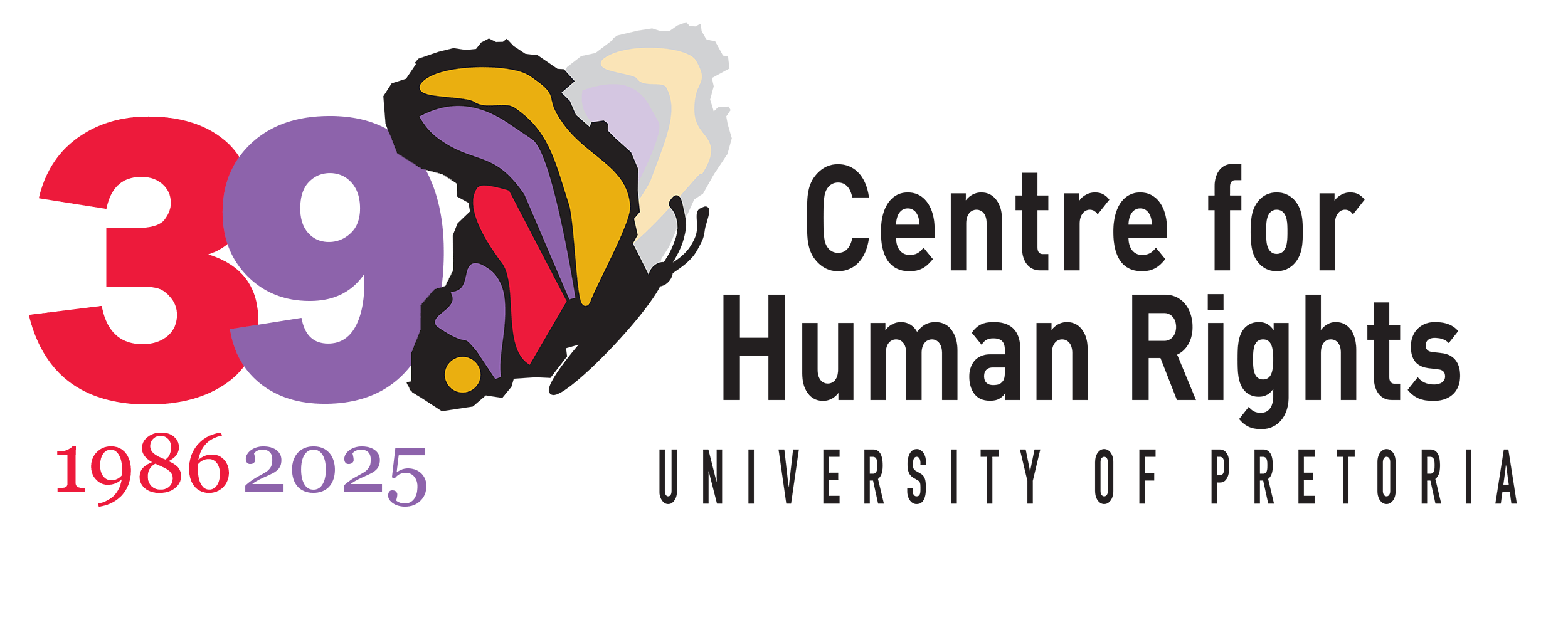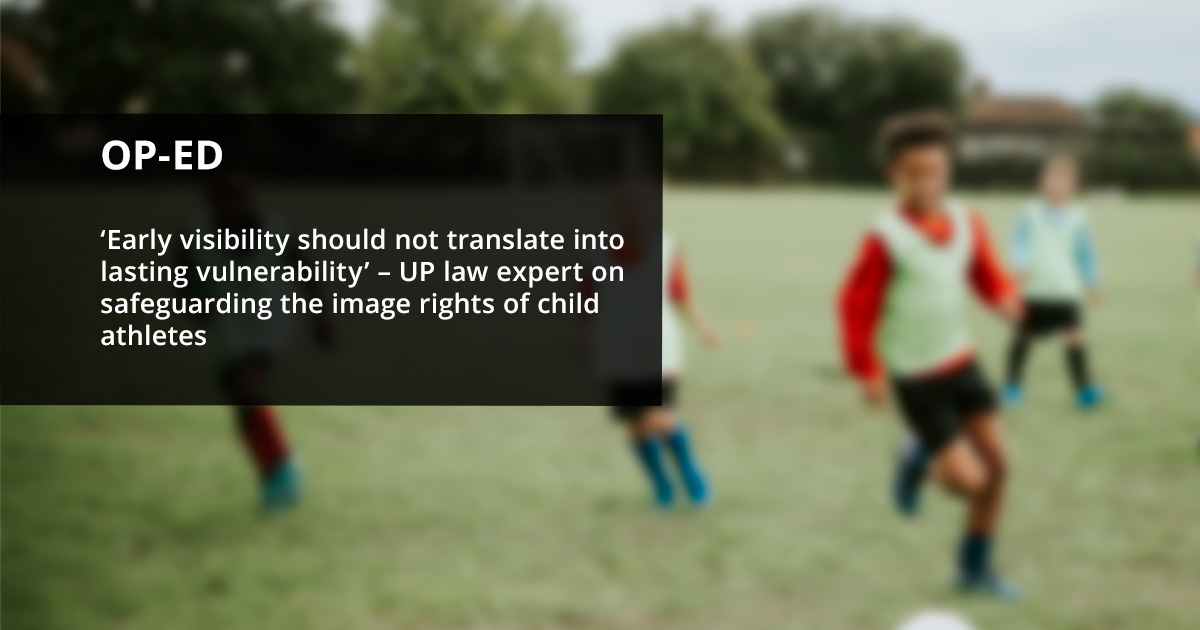By Belinda Matore, an LLD candidate and project officer at the Centre for Human Rights in the Faculty of Law at the University of Pretoria
Images of children participating in sport are widespread across social media, club websites, newsletters and broadcasts. While such images celebrate achievement and community, they also expose minors to risks such as exploitation, cyberbullying, identity theft and digital permanence. In South Africa, legal protection for children’s images arises from the Constitution, common law personality rights and the Protection of Personal Information Act 4 of 2013 (POPIA). Yet these frameworks only partially address how children’s images intersect with safeguarding in digital environments.
Image rights should be situated within a child-safeguarding framework, guided by the constitutional principle that the best interests of the child are paramount. The right to be forgotten, constitutional principles and international child rights norms are central to protecting the digital identity of child athletes.
While South African law does not recognise a statutory “image right”, constitutional and common law principles safeguard identity and likeness. The Supreme Court of Appeal in Grütter v Lombard (2007) confirmed that using a person’s image without consent is unlawful under the actio iniuriarum, which is a common-law remedy that protects an individual’s personality rights, including dignity, privacy and identity, against intentional and wrongful infringement. While the case concerned an adult, the reasoning extends to minors – that the unauthorised commercial exploitation of a child’s image infringes their personality rights. In Kumalo v Cycle Lab (Pty) Ltd (2011), the unauthorised use of a celebrity’s photograph was held to violate her rights to identity, privacy and dignity. These cases demonstrate that children’s images, particularly in sport, warrant stronger protection against misappropriation. Section 28(2) of the Constitution states that the best interests of the child must guide all matters affecting them, including the publication and digital sharing of images.
POPIA governs the processing of personal information and treats children as a vulnerable category of data subjects. Sections 34 and 35 prohibit processing a child’s personal information unless consent is obtained from a competent person, the processing is necessary to exercise a legal right, or the Information Regulator authorises it in the public interest. Because identifiable images and videos of children constitute personal information, schools, clubs and media outlets must ensure compliance with POPIA’s consent, purpose and retention requirements. POPIA’s emphasis on purpose limitation and proportionality aligns with safeguarding duties by reducing unnecessary exposure and promoting the ongoing protection of children’s digital identities.
Parents and organisations often record children’s sporting moments for promotion or celebration. However, safeguarding now extends beyond physical safety to include protection from digital harms. In Centre for Child Law and Others v Media24 Ltd and Others (2019), the Constitutional Court held that children’s privacy must remain protected even after proceedings conclude, confirming their enduring vulnerability to exposure. Routine sharing of sporting images by schools, clubs and parents can lead to exploitation, cyberbullying or permanent digital retention.
The National Child Safeguarding Policy Framework (2023) issued by the Department of Sport, Arts and Culture recognises the need for digital safeguarding in sport. It calls for informed parental consent, restricting personal identifiers, supervised photography and the secure storage of media. Recent jurisprudence reinforces this stance. In P.P.M and Others v Minister of Home Affairs and Others (2024), the High Court highlighted the duty to protect a child’s legal identity and personal information. In 2025, a consent order secured by The Digital Law Co against Meta required the removal of exploitative material involving schoolchildren, disabling offending accounts and establishing a direct child-protection hotline. This precedent highlights that digital platforms bear a duty to safeguard minors’ privacy and dignity. Internationally, the UN Committee on the Rights of the Child’s General Comment No. 25 (2021) affirms that children have rights to privacy and agency online, and that states must address risks such as exploitation and the unauthorised use of images.
This brings us to the right to be forgotten and the digital afterlife of sports images. Digital technologies and social media amplify concerns about children’s control over their data. The right to be forgotten, which refers to allowing individuals to request deletion of personal information, is a means to mitigate long-term harm. For child athletes, this right is critical as images posted during their youth can persist indefinitely, potentially affecting their well-being or reputation.
Generative artificial intelligence and large-scale data collection complicate enforcement by replicating and storing content across platforms. Yet South African case law, including Grütter and Kumalo, affirms the importance of consent and control over personal images. Extending these principles to digital environments means children and guardians should have accessible mechanisms to remove images from online platforms. The 2025 Meta consent order exemplifies practical enforcement of erasure and safeguarding principles, demonstrating that platforms can be held accountable for removing harmful content. Embedding the right to be forgotten into sports governance and safeguarding practices thus ensures children’s continued agency over their digital identities.
To develop a truly child-centred framework for sporting images, three interdependent elements must be integrated: legal compliance, safeguarding and digital literacy. Children should be recognised as rights-holders, not merely passive subjects of protection. At the heart of this framework is the right to image dignity, which means that images of children must be used lawfully, respectfully and with informed, revocable consent. Guardians should provide documented permission for image use, while children who have attained sufficient maturity, generally over the age of 12, should have the opportunity to co-consent, in line with the Children’s Act 38 of 2005.
The framework must also include a right to deletion and digital stewardship, ensuring images can be withdrawn or anonymised under POPIA. Sports bodies, schools and governing entities should adopt policies that address online safety, data protection and responsible sharing, supported by educational programmes for children, parents, coaches and staff. Implementation measures include clear consent forms, digital media policies and staff training on safeguarding and data compliance. Aligning these measures with the UN Convention on the Rights of the Child ensures coherence with global standards of privacy and autonomy.
The intersection of image rights, safeguarding and digital technology demands a recalibration of traditional privacy frameworks. In youth sport, visibility must be balanced with protection. The right to be forgotten empowers children to reclaim control over their digital identities, ensuring that early visibility does not translate into lasting vulnerability. While South Africa’s constitutional, common law and statutory protections provide a strong legal foundation, effective safeguarding requires operationalising these principles through a child-centred, rights-based approach. By prioritising the best interests of the child, sports organisations can foster safe participation, celebrate achievement, and preserve children’s dignity and autonomy in the digital age.
Disclaimer: The opinions expressed in this article are solely those of the author and do not necessarily reflect the views of the University of Pretoria.


